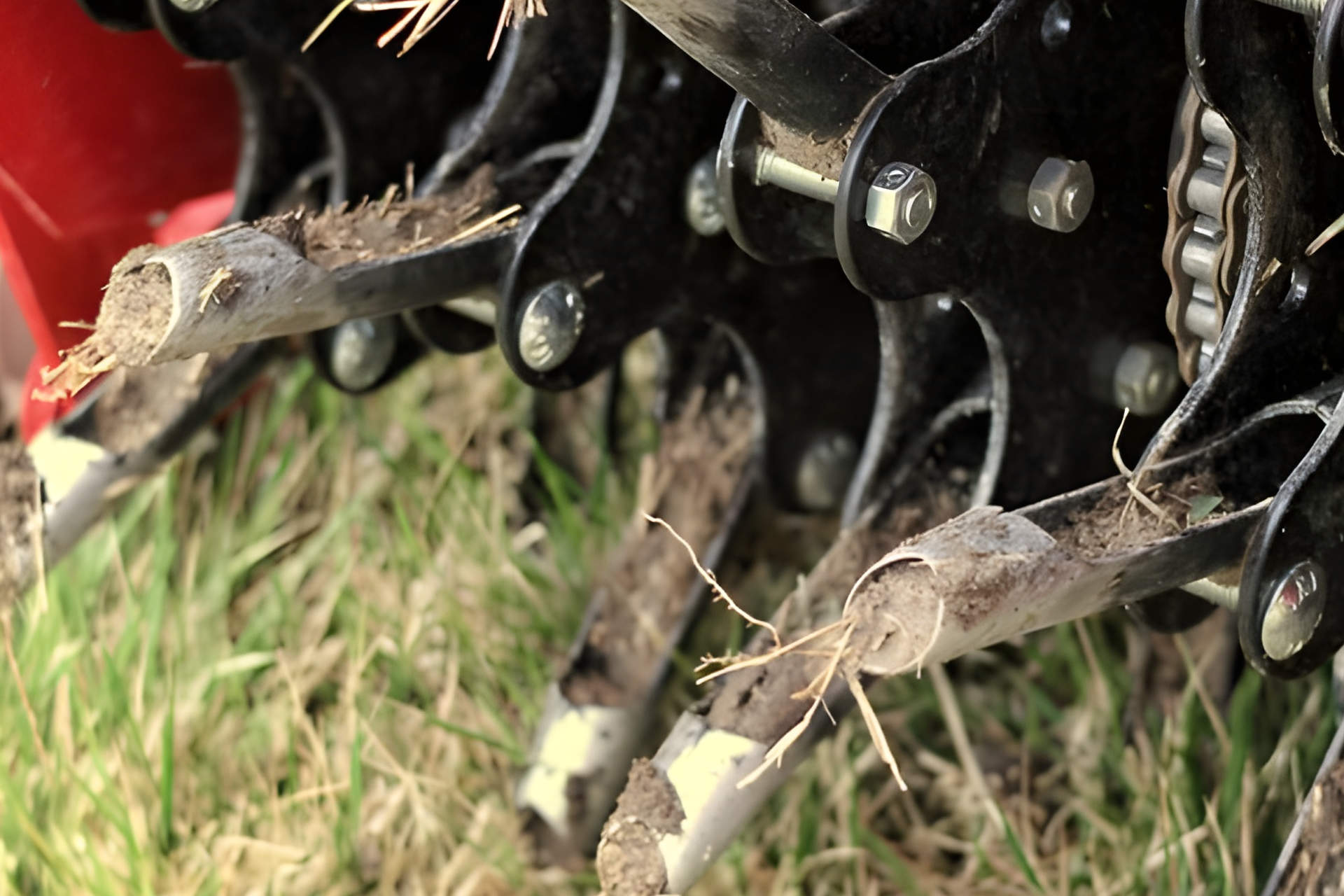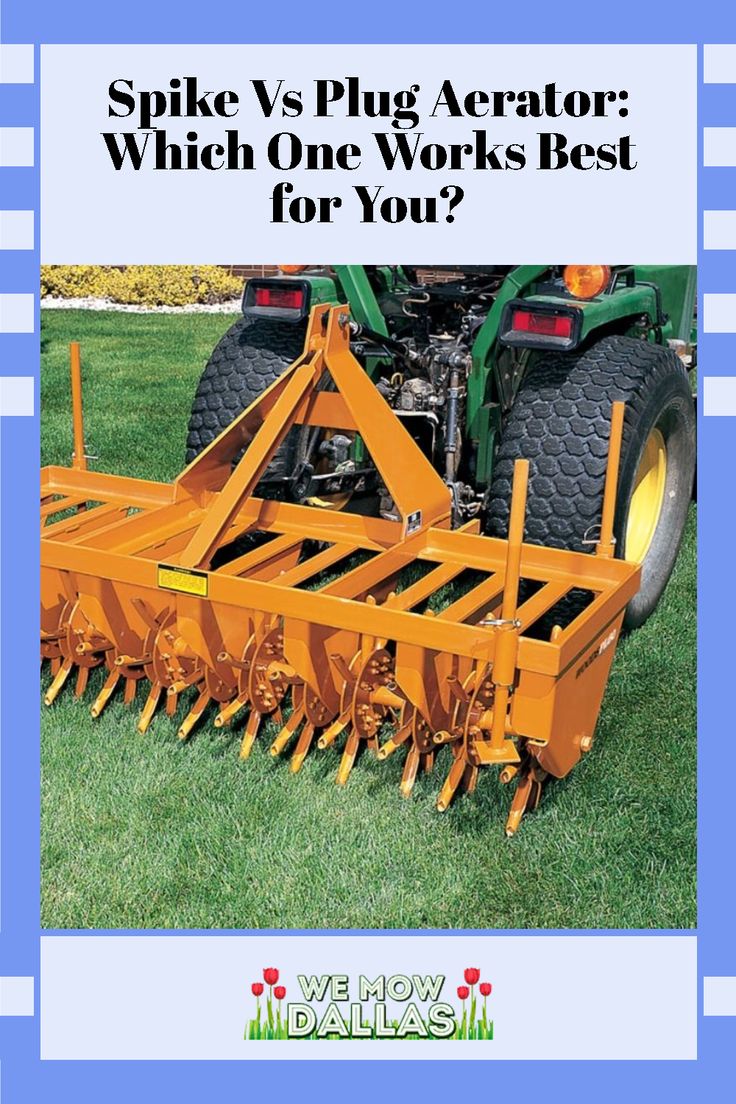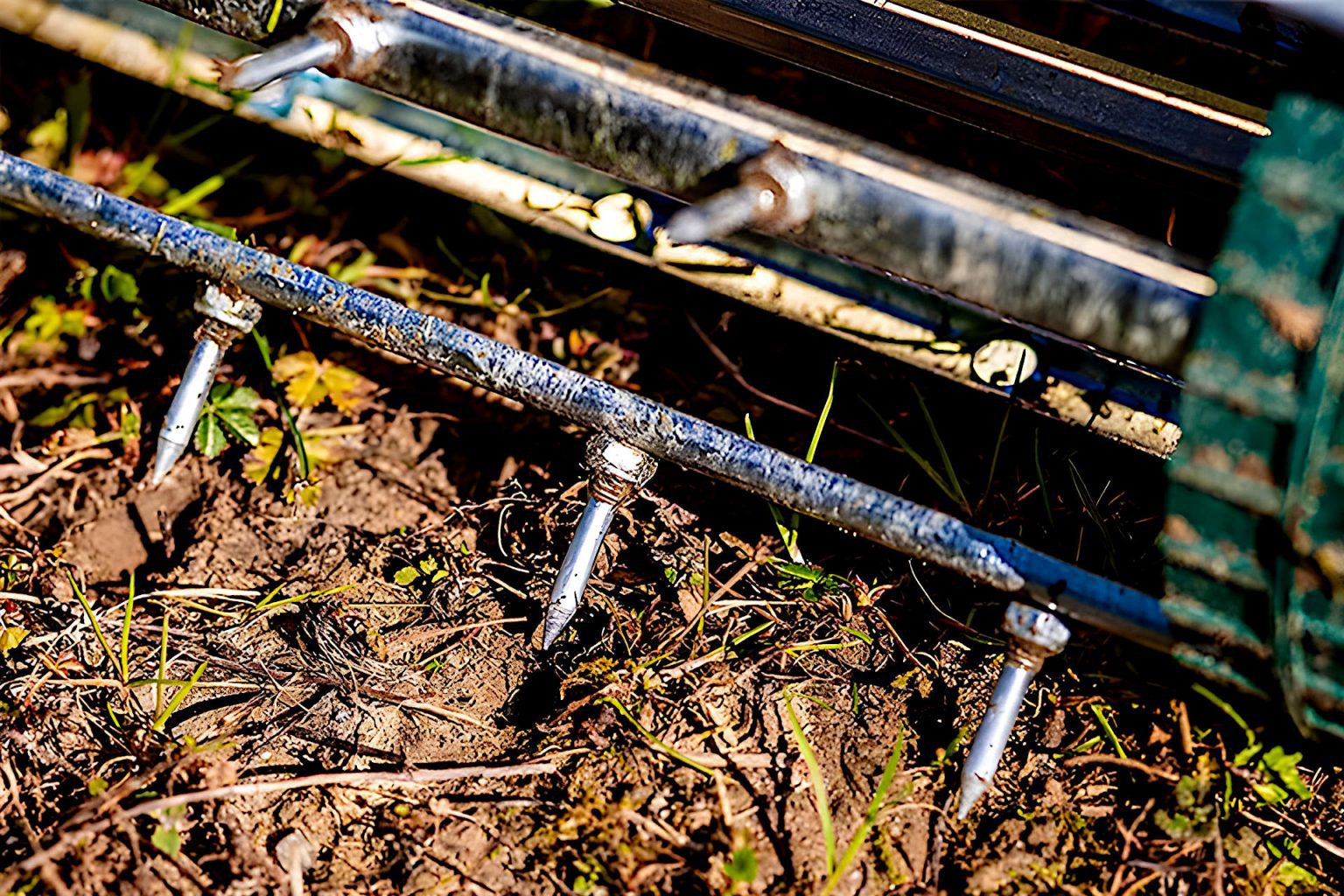What is Lawn Aeration and Why is it Important?
Lawn aeration is a crucial process that involves removing small plugs of soil and grass to improve airflow, reduce soil compaction, and promote healthy grass growth. This process is essential for maintaining a lush and vibrant lawn, as it allows water, air, and nutrients to reach the roots of the grass more efficiently. By aerating the lawn, homeowners can improve soil drainage, reduce soil compaction, and create an environment that fosters healthy grass growth.
Soil compaction is a common problem that can occur when soil is subjected to heavy foot or vehicle traffic, causing the soil particles to become densely packed. This can lead to a range of problems, including poor drainage, reduced air circulation, and increased soil temperature. Lawn aeration helps to alleviate these issues by creating small holes in the soil that allow air, water, and nutrients to penetrate deeper into the soil.
When it comes to choosing the right tool for lawn aeration, homeowners are often faced with a decision between spike vs plug lawn aerators. While both types of aerators can be effective, they work in different ways and have distinct advantages and disadvantages. Understanding the benefits and drawbacks of each type of aerator is essential for selecting the right tool for the job.
In general, lawn aeration is a simple and effective way to improve the health and appearance of a lawn. By removing small plugs of soil and grass, homeowners can create a more favorable environment for grass growth, reduce soil compaction, and improve soil drainage. Whether you choose a spike or plug aerator, the benefits of lawn aeration are clear: a healthier, more vibrant lawn that requires less maintenance and care.
Spike vs Plug Aerator: Understanding the Difference
When it comes to choosing a lawn aerator, homeowners are often faced with a decision between two main types: spike aerators and plug aerators. Both types of aerators can be effective, but they work in different ways and have distinct advantages and disadvantages. Understanding the differences between spike and plug aerators is essential for selecting the right tool for the job.
Spike aerators, such as the Yard Butler IM-40, use a series of spikes or tines to poke holes in the soil and loosen compacted soil. These aerators are typically less expensive than plug aerators and are often easier to use, especially for small to medium-sized lawns. However, spike aerators may not be as effective for lawns with heavy clay soil or for removing soil plugs.
Plug aerators, such as the Brinly-Hardy Tow-Behind Aerator, use a series of rotating drums or reels to remove small plugs of soil and grass. These aerators are more effective for lawns with heavy clay soil and can promote deeper root growth. However, plug aerators are often more expensive than spike aerators and may require more maintenance.
When deciding between a spike and plug aerator, consider the size and type of your lawn, as well as the level of soil compaction. For small to medium-sized lawns with minimal soil compaction, a spike aerator may be the better choice. However, for larger lawns or lawns with heavy clay soil, a plug aerator may be more effective.
It’s also important to consider the features and specifications of each aerator, such as the number of spikes or tines, the depth of penetration, and the weight and maneuverability of the aerator. By understanding the differences between spike and plug aerators, homeowners can make an informed decision and choose the right tool for their lawn care needs.
How to Choose the Right Aerator for Your Lawn
Choosing the right lawn aerator can be a daunting task, especially with the numerous options available in the market. However, by considering a few key factors, you can make an informed decision and select the best aerator for your lawn type, size, and soil condition.
First and foremost, consider the type of aerator you need. Spike aerators are ideal for small to medium-sized lawns with minimal soil compaction, while plug aerators are better suited for larger lawns or lawns with heavy clay soil. If you’re unsure, consider the size and type of your lawn, as well as the level of soil compaction.
Next, consider the size and weight of the aerator. A larger aerator may be more effective for larger lawns, but it may also be more difficult to maneuver. On the other hand, a smaller aerator may be easier to use, but it may not be as effective for larger lawns.
Additional features to consider include adjustable depth and tow-behind capability. Adjustable depth allows you to customize the depth of penetration to suit your lawn’s specific needs, while tow-behind capability makes it easier to aerate larger lawns.
When choosing between a spike vs plug lawn aerator, also consider the maintenance requirements. Some aerators may require more frequent maintenance, such as cleaning and lubricating the tines or drums. Others may be more low-maintenance, but may require more frequent replacement of parts.
Finally, consider the price and value of the aerator. While it may be tempting to opt for the cheapest option, consider the long-term benefits and value of the aerator. A higher-quality aerator may be more expensive upfront, but it may also provide better results and last longer.
By considering these factors, you can make an informed decision and choose the right lawn aerator for your specific needs. Remember to always follow the manufacturer’s instructions and take necessary safety precautions when using your aerator.
The Benefits of Spike Aerators: When to Use Them
Spike aerators are a popular choice among homeowners due to their ease of use, affordability, and effectiveness for small to medium-sized lawns. These aerators use a series of spikes or tines to poke holes in the soil, loosening compacted soil and improving drainage.
One of the main benefits of spike aerators is their ease of use. They are typically lightweight and easy to maneuver, making them perfect for small lawns or lawns with tight spaces. Additionally, spike aerators are often less expensive than plug aerators, making them a more affordable option for homeowners on a budget.
Spike aerators are also effective for lawns with minimal soil compaction. They are able to loosen compacted soil and improve drainage, promoting healthy grass growth. However, they may not be as effective for lawns with heavy clay soil or for removing soil plugs.
When to use spike aerators? They are ideal for small to medium-sized lawns with minimal soil compaction. They are also a good choice for lawns with tight spaces or for homeowners who want a lightweight and easy-to-use aerator.
Some popular spike aerators include the Yard Butler IM-40 and the Ames 2915100. These aerators are known for their ease of use and effectiveness for small to medium-sized lawns.
While spike aerators have their benefits, it’s essential to consider the specific needs of your lawn before making a decision. If you have a larger lawn or lawn with heavy clay soil, a plug aerator may be a better choice. However, for small to medium-sized lawns with minimal soil compaction, a spike aerator is an excellent option.
The Advantages of Plug Aerators: When to Use Them
Plug aerators are a popular choice among homeowners who want to achieve a lush, healthy lawn. These aerators use a series of rotating drums or reels to remove small plugs of soil and grass, promoting deeper root growth and reducing soil compaction.
One of the main advantages of plug aerators is their ability to remove soil plugs, which can help to improve soil drainage and reduce soil compaction. This is especially beneficial for lawns with heavy clay soil, as it can help to break up the clay and improve soil structure.
Plug aerators are also effective for larger lawns, as they can cover more ground and remove more soil plugs than spike aerators. Additionally, plug aerators can promote deeper root growth, which can help to make the lawn more drought-resistant and less prone to disease.
When to use plug aerators? They are ideal for larger lawns or lawns with heavy clay soil. They are also a good choice for homeowners who want to promote deeper root growth and improve soil drainage.
Some popular plug aerators include the Brinly-Hardy Tow-Behind Aerator and the Agri-Fab 45-0299. These aerators are known for their effectiveness and durability, and are a great choice for homeowners who want to achieve a lush, healthy lawn.
While plug aerators have their advantages, it’s essential to consider the specific needs of your lawn before making a decision. If you have a small to medium-sized lawn with minimal soil compaction, a spike aerator may be a better choice. However, for larger lawns or lawns with heavy clay soil, a plug aerator is an excellent option.
How to Use a Lawn Aerator for Optimal Results
Using a lawn aerator can be a straightforward process, but it’s essential to follow some basic steps to ensure optimal results. Here’s a step-by-step guide on how to use a lawn aerator:
Preparation: Before aerating your lawn, make sure to remove any debris, toys, or furniture that could interfere with the aerator. Also, mark any areas with underground utilities or irrigation systems to avoid damaging them.
Operation: Start by aerating your lawn in a consistent pattern, working in sections to ensure even coverage. For spike aerators, simply push the aerator forward, allowing the spikes to penetrate the soil. For plug aerators, follow the manufacturer’s instructions for proper operation.
Maintenance: After aerating your lawn, make sure to maintain the aerator by cleaning and lubricating the tines or drums. This will help extend the life of the aerator and ensure optimal performance.
Safety Precautions: Always wear protective gear, such as gloves and safety glasses, when operating a lawn aerator. Also, be mindful of your surroundings and avoid aerating near slopes or uneven terrain.
Additional Tips: For best results, aerate your lawn during the growing season, when the grass is actively growing. Also, consider aerating your lawn in the fall, after the heat of summer, to help promote healthy growth and prepare the lawn for the next growing season.
By following these steps and tips, you can ensure optimal results from your lawn aerator and achieve a lush, healthy lawn. Remember to always follow the manufacturer’s instructions and take necessary safety precautions when operating a lawn aerator.
Common Mistakes to Avoid When Aerating Your Lawn
While lawn aeration can be a beneficial process for your lawn, there are some common mistakes to avoid to ensure optimal results. Here are some mistakes to watch out for:
Aerating too frequently: Aerating your lawn too frequently can cause more harm than good. It can lead to soil compaction, damage to the grass, and even create an environment for weeds to grow. It’s recommended to aerate your lawn once a year, or as needed.
Using the wrong type of aerator: Using the wrong type of aerator for your lawn can lead to ineffective aeration and even damage to the grass. For example, using a spike aerator on a lawn with heavy clay soil can cause more harm than good. It’s essential to choose the right type of aerator for your lawn type and soil condition.
Not maintaining the aerator: Failing to maintain the aerator can lead to poor performance and even damage to the machine. Regular maintenance, such as cleaning and lubricating the tines or drums, can help extend the life of the aerator and ensure optimal performance.
Aerating in the wrong season: Aerating your lawn in the wrong season can be ineffective and even cause harm to the grass. For example, aerating in the middle of the summer can cause stress to the grass, while aerating in the fall can help prepare the lawn for the next growing season.
Not following safety precautions: Not following safety precautions when aerating your lawn can lead to accidents and injuries. It’s essential to wear protective gear, such as gloves and safety glasses, and to be mindful of your surroundings when operating a lawn aerator.
By avoiding these common mistakes, you can ensure optimal results from your lawn aerator and achieve a lush, healthy lawn.
Conclusion: Get the Best Results from Your Lawn Aerator
Choosing the right lawn aerator and using it correctly can make all the difference in achieving a lush, healthy lawn. By understanding the benefits of lawn aeration, the differences between spike and plug aerators, and how to use them effectively, you can improve soil drainage, reduce soil compaction, and promote healthy grass growth.
Remember to consider your lawn type, size, and soil condition when selecting an aerator, and choose the right type of aerator for your specific needs. Spike aerators are ideal for small to medium-sized lawns with minimal soil compaction, while plug aerators are better suited for larger lawns or lawns with heavy clay soil.
By following the tips and guidelines outlined in this article, you can get the best results from your lawn aerator and achieve a beautiful, healthy lawn. Whether you’re a seasoned lawn care professional or a DIY enthusiast, the right lawn aerator can make all the difference in achieving a lush, vibrant lawn that you can be proud of.
So why wait? Choose the right lawn aerator for your needs today and start enjoying a healthier, more beautiful lawn tomorrow. With the right tools and techniques, you can achieve a lawn that’s the envy of the neighborhood.








